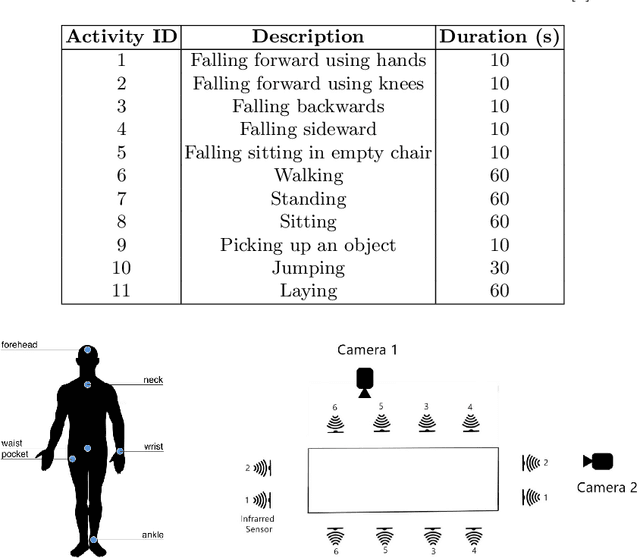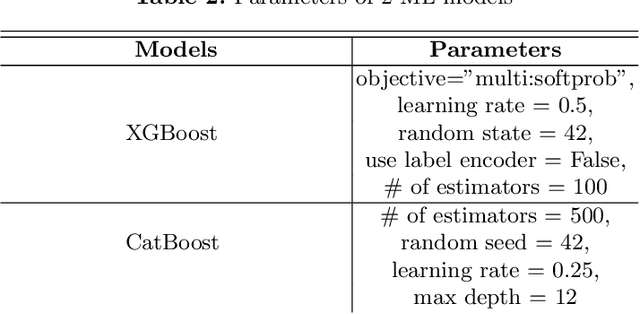Trung T. Nguyen
Fake Advertisements Detection Using Automated Multimodal Learning: A Case Study for Vietnamese Real Estate Data
Jan 18, 2025Abstract:The popularity of e-commerce has given rise to fake advertisements that can expose users to financial and data risks while damaging the reputation of these e-commerce platforms. For these reasons, detecting and removing such fake advertisements are important for the success of e-commerce websites. In this paper, we propose FADAML, a novel end-to-end machine learning system to detect and filter out fake online advertisements. Our system combines techniques in multimodal machine learning and automated machine learning to achieve a high detection rate. As a case study, we apply FADAML to detect fake advertisements on popular Vietnamese real estate websites. Our experiments show that we can achieve 91.5% detection accuracy, which significantly outperforms three different state-of-the-art fake news detection systems.
Energy-Aware Resource Allocation for Energy Harvesting Powered Wireless Sensor Nodes
Jan 11, 2025Abstract:Low harvested energy poses a significant challenge to sustaining continuous communication in energy harvesting (EH)-powered wireless sensor networks. This is mainly due to intermittent and limited power availability from radio frequency signals. In this paper, we introduce a novel energy-aware resource allocation problem aimed at enabling the asynchronous accumulate-then-transmit protocol, offering an alternative to the extensively studied harvest-then-transmit approach. Specifically, we jointly optimize power allocation and time fraction dedicated to EH to maximize the average long-term system throughput, accounting for both data and energy queue lengths. By leveraging inner approximation and network utility maximization techniques, we develop a simple yet efficient iterative algorithm that guarantees at least a local optimum and achieves long-term utility improvement. Numerical results highlight the proposed approach's effectiveness in terms of both queue length and sustained system throughput.
Machine Unlearning using Forgetting Neural Networks
Oct 29, 2024Abstract:Modern computer systems store vast amounts of personal data, enabling advances in AI and ML but risking user privacy and trust. For privacy reasons, it is desired sometimes for an ML model to forget part of the data it was trained on. This paper presents a new approach to machine unlearning using forgetting neural networks (FNN). FNNs are neural networks with specific forgetting layers, that take inspiration from the processes involved when a human brain forgets. While FNNs had been proposed as a theoretical construct, they have not been previously used as a machine unlearning method. We describe four different types of forgetting layers and study their properties. In our experimental evaluation, we report our results on the MNIST handwritten digit recognition and fashion datasets. The effectiveness of the unlearned models was tested using Membership Inference Attacks (MIA). Successful experimental results demonstrate the great potential of our proposed method for dealing with the machine unlearning problem.
Machine Unlearning using a Multi-GAN based Model
Jul 26, 2024Abstract:This article presents a new machine unlearning approach that utilizes multiple Generative Adversarial Network (GAN) based models. The proposed method comprises two phases: i) data reorganization in which synthetic data using the GAN model is introduced with inverted class labels of the forget datasets, and ii) fine-tuning the pre-trained model. The GAN models consist of two pairs of generators and discriminators. The generator discriminator pairs generate synthetic data for the retain and forget datasets. Then, a pre-trained model is utilized to get the class labels of the synthetic datasets. The class labels of synthetic and original forget datasets are inverted. Finally, all combined datasets are used to fine-tune the pre-trained model to get the unlearned model. We have performed the experiments on the CIFAR-10 dataset and tested the unlearned models using Membership Inference Attacks (MIA). The inverted class labels procedure and synthetically generated data help to acquire valuable information that enables the model to outperform state-of-the-art models and other standard unlearning classifiers.
Fall detection using multimodal data
May 12, 2022



Abstract:In recent years, the occurrence of falls has increased and has had detrimental effects on older adults. Therefore, various machine learning approaches and datasets have been introduced to construct an efficient fall detection algorithm for the social community. This paper studies the fall detection problem based on a large public dataset, namely the UP-Fall Detection Dataset. This dataset was collected from a dozen of volunteers using different sensors and two cameras. We propose several techniques to obtain valuable features from these sensors and cameras and then construct suitable models for the main problem. The experimental results show that our proposed methods can bypass the state-of-the-art methods on this dataset in terms of accuracy, precision, recall, and F1 score.
 Add to Chrome
Add to Chrome Add to Firefox
Add to Firefox Add to Edge
Add to Edge